
Ecuador, officially the Republic of Ecuador, is a country in northwestern South America, bordered by Colombia on the north, Peru on the east and south, and the Pacific Ocean on the west. Ecuador also includes the Galápagos Islands in the Pacific, about 1,000 kilometres (621 mi) west of the mainland. The capital is Quito.

José Eloy Alfaro Delgado was an Ecuadorian politician who served as the President of Ecuador from 1895 to 1901 and from 1906 to 1911. Alfaro became one of the strongest opponents of pro-Catholic conservative President Gabriel García Moreno (1821–1875) and was known as the Viejo Luchador for playing a central role in the Liberal Revolution of 1895 and having fought conservatism for almost 30 years.

The Ibero-American Exposition of 1929 was a world's fair held in Seville, Spain, from 9 May 1929 until 21 June 1930. Countries in attendance of the exposition included: Portugal, the United States, Brazil, Uruguay, Mexico, Peru, Argentina, Chile, the Republic of Colombia, Cuba, Venezuela, the Dominican Republic, Bolivia, Panama, El Salvador, Costa Rica, and Ecuador. Each Spanish region and each of the provinces of Andalusia were also represented. Spain’s Dictator General Miguel Primo de Rivera gave the opening address. Primo de Rivera allowed the Spanish King Alfonso XIII to give the final words and officially open the exposition. The purpose of the exposition was to improve relations between Spain and the countries in attendance, all of which have historical ties with Spain through colonization or political union. Other countries were represented at the International section in Barcelona.
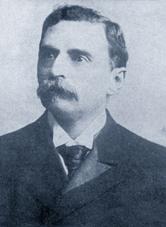
Carlos Freile Zaldumbide was an Ecuadorian politician, who served twice as acting President of Ecuador and one term as Vice President of Ecuador.

Alfredo Pareja Diezcanseco — born Alfredo Pareja y Díez Canseco — was a prominent Ecuadorian novelist, essayist, journalist, historian and diplomat. An innovator of the 20th-century Latin American novel, he was a founding member of the literary Grupo de Guayaquil, which brought a new emphasis to realistic novels.
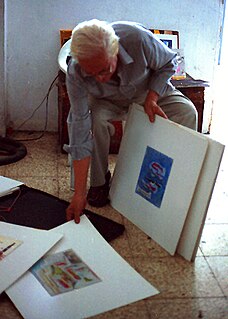
Luis Enrique Tábara is a master Ecuadorian painter and teacher representing a whole Hispanic pictorial and artistic culture.

¡Alfaro Vive, Carajo! (AVC), another name for the Fuerzas Armadas Populares Eloy Alfaro, was a clandestine left-wing group in Ecuador, founded in 1982 and named after popular government leader and general Eloy Alfaro.
Xavier Blum Pinto is an Ecuadorian artist. From 1974 to 1976 he studied architecture at the Universidad Catolica Santiago de Guayaquil, in Ecuador. In 1981, obtained his MA in Fine Arts from the Universitė of Paris VIII, France.
Federico González Suárez (1844–1917) was an Ecuadorian priest, historian and politician who served as the Archbishop of Quito for twelve years. Prior to becoming the Archbishop of Quito, he served as a senator in the Ecuadorian government in 1894 and then as the Bishop of Ibarra from 1895 to 1905.

The Ferrocarriles del Ecuador Empresa Publica is the national railway of Ecuador. The railway system was devised to connect the Pacific coast with the Andean highlands. After many decades of service the railway was severely damaged by heavy rainfall during the El Niño in 1997 and 1998 and from general neglect as the Pan-American Highway siphoned off passengers.

Independence Square is the principal and central public square of Quito, Ecuador. This is the central square of the city and one of the symbols of the executive power of the nation. Its main feature is the monument to the independence heroes of August 10, 1809, date remembered as the First Cry of Independence of the Royal Audience of Quito from spanish monarchy. The square is flanked by the Carondelet Palace, the Metropolitan Cathedral, the Archbishop's Palace, the Municipal Palace and the Plaza Grande Hotel.
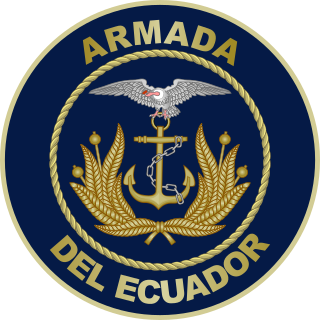
The Ecuadorian Navy is responsible for the surveillance and protection of national maritime territory and has a personnel of 9,127 men to protect a coastline of 2,237 km which reaches far into the Pacific Ocean. The vessels are identified by a ship prefix of B.A.E.: Buque de la Armada del Ecuador or L.A.E.: Lancha de la Armada del Ecuador.
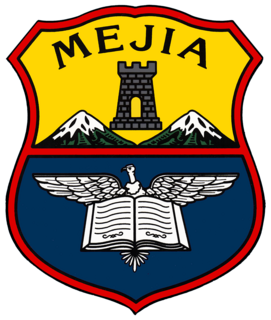
Instituto Nacional Mejía is a public secondary educational institution of Quito. It was founded on June 1, 1897 by Eloy Alfaro Delgado, then president of Ecuador.

Miguel Betancourt is an Ecuadorian contemporary artist living in Quito, Ecuador. He was formed as an artist in Ecuador, the United States, and the United Kingdom. His paintings are a fusion of local cultural motives and colors, and Western artistic influence.

Edmond Catefort was a French entrepreneur settled in Ecuador, who participated in the economic and public live of Ecuador during the government of Eloy Alfaro.
The Concha Revolution (1912–1916) was an outcome of the assassination of liberal Ecuadorian leader Eloy Alfaro -- responsible for the Liberal Revolution of 1895 -- on January 28, 1912, in Quito. In the north of Ecuador, the citizens of Esmeraldas, especially the Afro-Esmeraldans, were loyal to the liberal cause and the ensuing struggle left many of the poorly armed blacks dead at the hands of government troops. This uprising in support of Alfaro was against a more conservative wing of the Liberal party. Ecuadorian blacks contributed notably to the military effort and even formed the bulk of Alfaro’s army in the region. The Esmeraldan rebel army was led and funded by Colonel Carlos Concha y Torres (1864–1919). This civil war left a bitter legacy in the region.

Jorge Pérez Concha was an Ecuadorian historian, biographer, writer, and diplomat.
Álvaro Pérez Intriago was an Ecuadorian politician. Perez served as the Mayor of Quito from 1978 to 1982. He also served as a deputy in the National Congress from 1984 to 1986 and again from 1996 to 2002. In 2002, Pérez became a candidate for Vice President of Ecuador as the running mate of presidential hopeful Xavier Neira Menéndez.
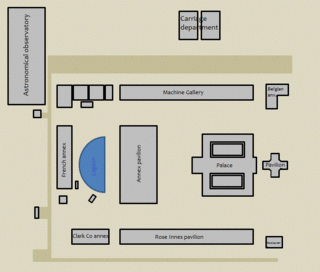
The Chilean International Exhibition was a world's fair held in Quinta Normal Park, Santiago, between 16 September 1875 and 16 January 1876 to show Chilean people recent technological and scientific advances.

Luis Enrique Marcial Gomezjurado Flores was an Ecuadorian painter, one of the most notable academic artists of the first decades of the 20th century. He specialized in the human figure and excelled in the portrait, also highlighted in Genre painting.
















